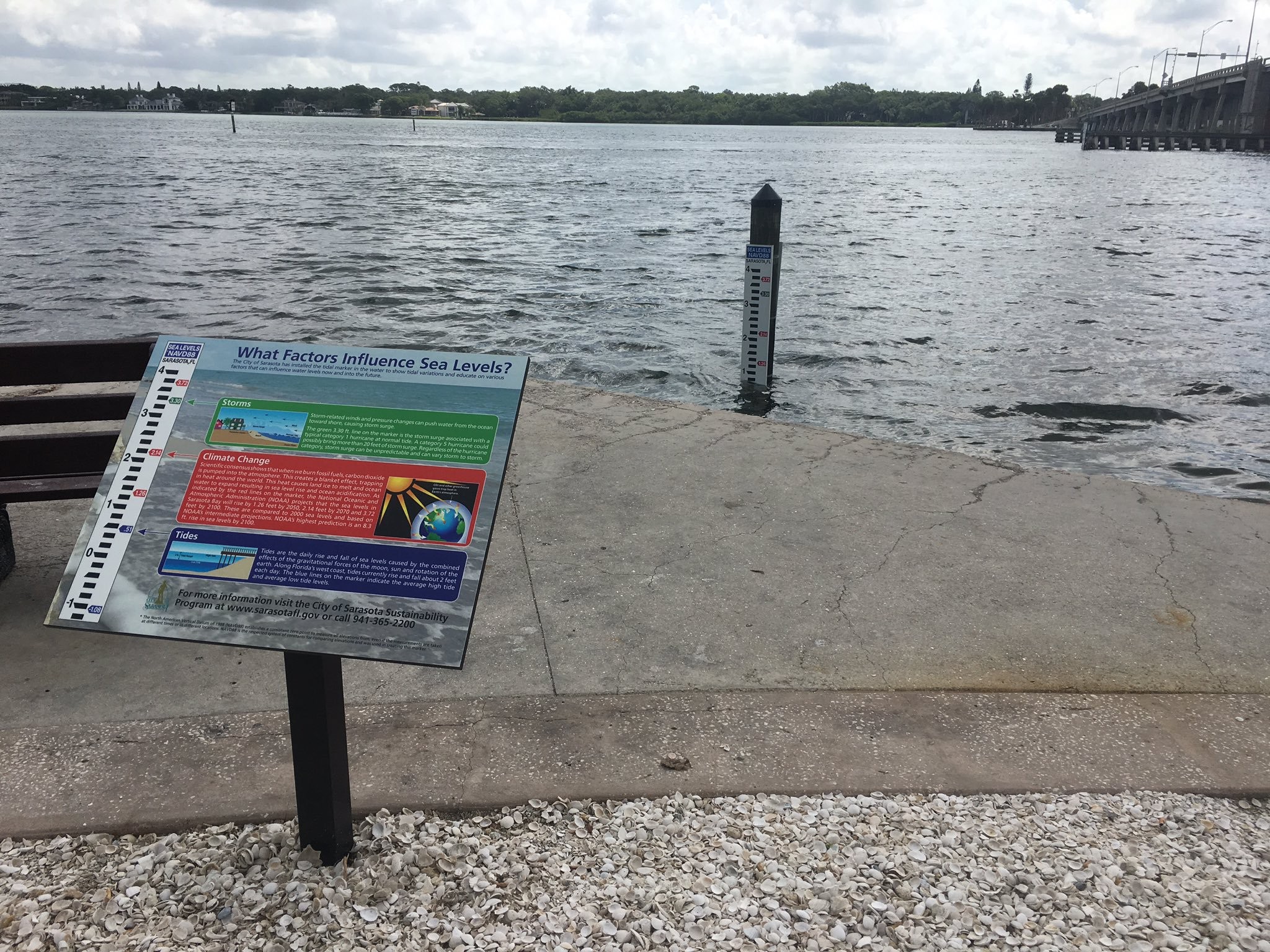New Solutions For A New Age: The Environment
Guest Correspondence
SRQ DAILY
SATURDAY NOV 23, 2019 |
BY DR. LARRY THOMPSON
Photo courtesy City of Sarasota
There is no denying that planet Earth is under increasing strain. According to the United Nations, the human population will exceed 9.7 billion by 2050 (it is currently 7.7 billion), putting incredible pressure on natural resources, such as food and clean water, that are essential to life on Earth. Added to the challenges posed by an increasing population are the effects of a changing climate.
Addressing these serious challenges will require a different approach to problem-solving, one that blends our analytical understanding of the issues with thinking that is collaborative, holistic, and creative. In short, solving the complex problems before us will take the hallmark thinking of the Creative Age: Seamless integration of left-brain and right-brain skills that arises only when both sides of the brain are allowed to be developed.
The impact of bringing both left- and right-brain skills to bear to solve problems cannot be overstated. Let’s consider the following examples.
Meet 16-year-old Swedish activist Greta Thunberg. What began with one young girl standing outside her country’s Parliament with a simple sign ended up with millions of young people and their families marching on behalf of our planet in what was the largest climate protest in history. Greta Thunberg was not afraid to try something new, to think big, or to fail – the defining characteristics of creativity. She used every tool at her fingertips, from that hand-drawn sign to a worldwide social media campaign, to convey her message on behalf of Mother Earth.
Or, let’s consider Boyan Slat. In 2010, while diving in Greece, he was dismayed to realize that he was seeing more plastic in the water than fish. Inspired to find a way to clean it up, he devoted the next two years to considering ways that he might do just that. In 2012, the then-18-year-old was invited to present his ideas at a Tedx Talk. Soon thereafter, Ocean Cleanup was born. After numerous attempts, a group led by Slat created a device that is successfully capturing and removing plastic—from large cartons and crates to tiny microplastics—from the ocean. Stoyan and his team combined right-brain creativity with left-brain technical expertise to find innovative solutions to an unsolved problem. The company is now beginning the development of the next phase for the device that will enable it to endure rough ocean conditions and retain the collected plastics until they can be processed for recycling.
Let’s move a little closer to home.
Sea level rise is difficult for many people to comprehend. There needs to be a way for citizens of a place like Florida’s Gulf Coast to understand it and its possible effects. Tim Rummage, faculty at Ringling College of Art and Design, and his students recognized the importance of raising awareness about the potential impacts of sea level rise to our area. Their solution was to create a way for people to visualize what sea level rise means to Sarasota. The result of their desire to convey an important scientific message in a creative and accessible way was the Rise and Run project.
On display first on Lido Beach and then on Siesta Key Beach, the project consisted of a series of flags that showed what high tide lines will look like when sea level rises by 6-inches, 2-feet, and even 3-feet. Providing these visual markers enabled the public to actually see—and begin to understand—the effect sea level rise could have on themselves, the environment, housing in the area, and the local economy.
Similarly, Mote Marine used last year’s innovative display Sea Debris: Awareness Through Art to bring awareness to the serious environmental issue of ocean pollution. Its larger-than-life, marine-inspired sculptures were made of plastic and other debris gathered from the Oregon coastline. This creative approach offered a novel way for people to visualize and understand the scale of this environmental problem.
More and more, we see the value creative thinking brings to problem solving. Combined with our already-strong left-brain skills (analysis, numeracy, linear thinking), the development of our right-brain skills (creativity, instinct, holistic thinking) will bring about ideas and approaches that will amaze us. From problems such as red tide, overfishing and coral replenishment to deforestation, sustainable food production and clean energy, our ability to find real solutions will come not from analytical and linear thinking alone, but from the powerful combination of our technical and creative strengths.
Those who understand that simple, yet profound, truth, that creativity is as important as analytical thinking, will lead the way in the Creative Age.
Dr. Larry Thompson is president of Ringling College of Art and Design.
Photo courtesy City of Sarasota
« View The Saturday Nov 23, 2019 SRQ Daily Edition
« Back To SRQ Daily Archive









